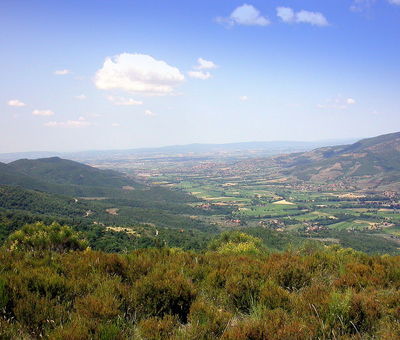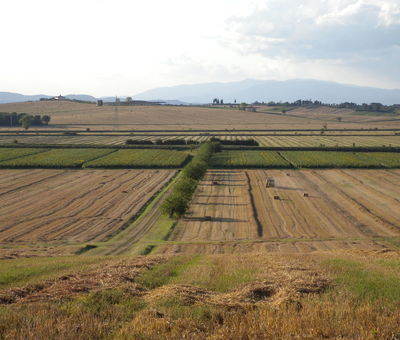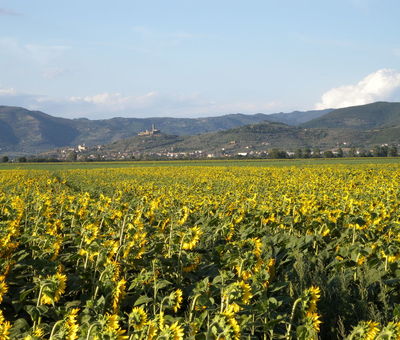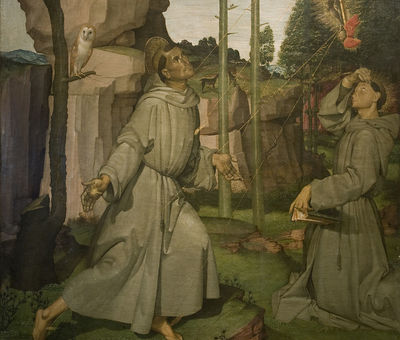Valley of Chio, valley of God
Call me Giuseppe Ghizzi.
A long time ago this was my name, the name of a notary that walked through the alleyways of a narrow village that lay between the last hills of Tuscany and the first mountains of Umbria, Castiglion Fiorentino.
I like losing myself in the silver of the olive canopies, the ancient stone of the mills, the aroma of Cypress trees…Orzale, Santa Margherita, Collesecco, Santa Cristina, Pieve di Chio. You might perceive me here as well, as I pass along the Cilone stream, its banks caressed by the branches of young oak trees. Who knows, perhaps Leopold II, his head heavy under the weight of the imperial crown of the Holy Roman Empire, let his mind drift, if only for a moment, from the pointed roofs of Vienna to this narrow valley between the hills. “Valley of Chio, Valley of God” was what he named it, drunk on the beauty of this Tuscan Garden of Eden.
The Chiana, on the edge of the hills
Here below me stretch the plains that so mesmerized another German, the Goethe that loved the “land where the lemon trees bloom”. Now I am at the Fattoria di Brolio (Brolio Farm), in a landscape of mounds and fields that recall the hills of Siena, there, on the edge of the horizon. Like those hills, here it was man’s intervention that created the garden-like countryside, working from a dangerous miasmatic swamp that almost saw Santa Margherita drown in its waters when crossing it one day.
I ponder upon this, and walk the Sentiero della Bonifica. Where there had been mud, malaria and poison, now there lay only dormant fields, their grain awaiting the sun’s kiss to explode into yellow.
The white ribbon of the road
Alas, it is not only life that passes through what used to be my land. There is also death, the death of my civilization, the farming civilization.
I knew it. Your grandparents knew it. You do not know it.
There it is, nonetheless, reflected in the ruins of the Leopoldine, the old farmhouses commissioned by the grand duke to rid these lands of their swamps, that had now become defeated melancholic giants. Giants that are however starting to get back up again. Passing through in ten years, I will, we will, still hear the farmers’ call for the harvest, and the modern roar of the tractor, instead of the old bellowing of the chianina bull.
Watching over everything are the blackbirds and crows of the Castello di Montecchio, a sandstone titan with a crown of olive trees, as intimidating as it was in the time of Captain Giovanni Acuto’s stay.
Aim for Bartolomeo
The shadow of night is falling. It’s time for me to go back. Although first one last little look at the treasures of the land that I had held so dear. I will go into the library, there where you might see me, a shadow among shadows, in the midst of a lifetime’s work, the shelves heavy with manuscripts and cinquecentine in leather and parchment.
Now we go to the Pinacoteca. On the last floor of Sant’Angelo, the prison’s church where one awaiting punishment would pray and suffer, we find the pride and glory of Bartolomeo della Gatta, St Francis receiving the stigmata! Under the sphinx-like gaze of the painted barn owl, thinking of the great subtle beauty of my land, a smile begins to stretch across my face, a smile much like the one visible on the face of the Saint.









